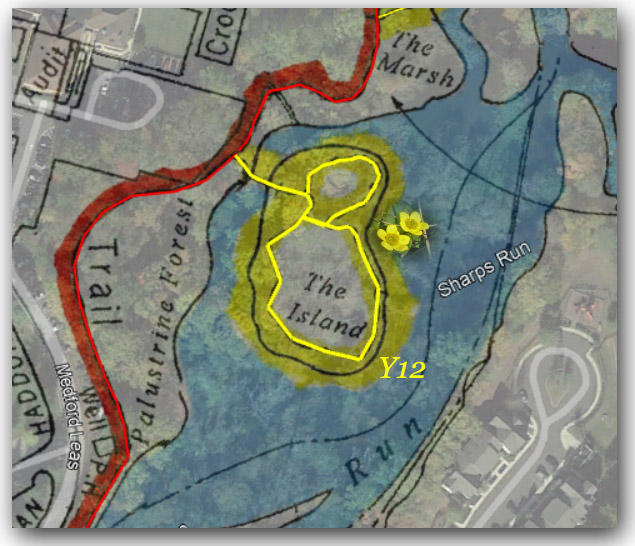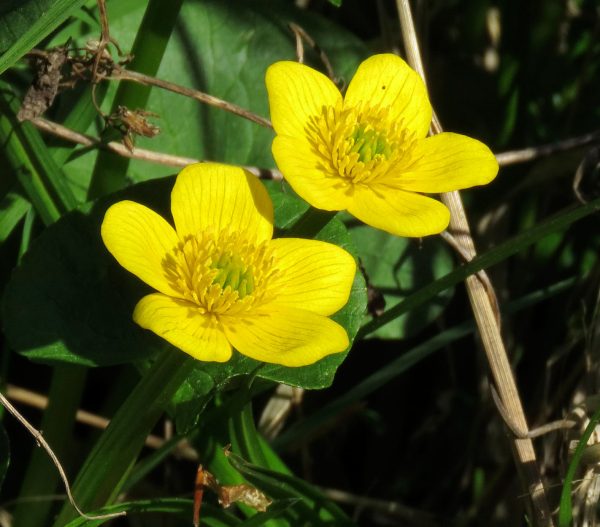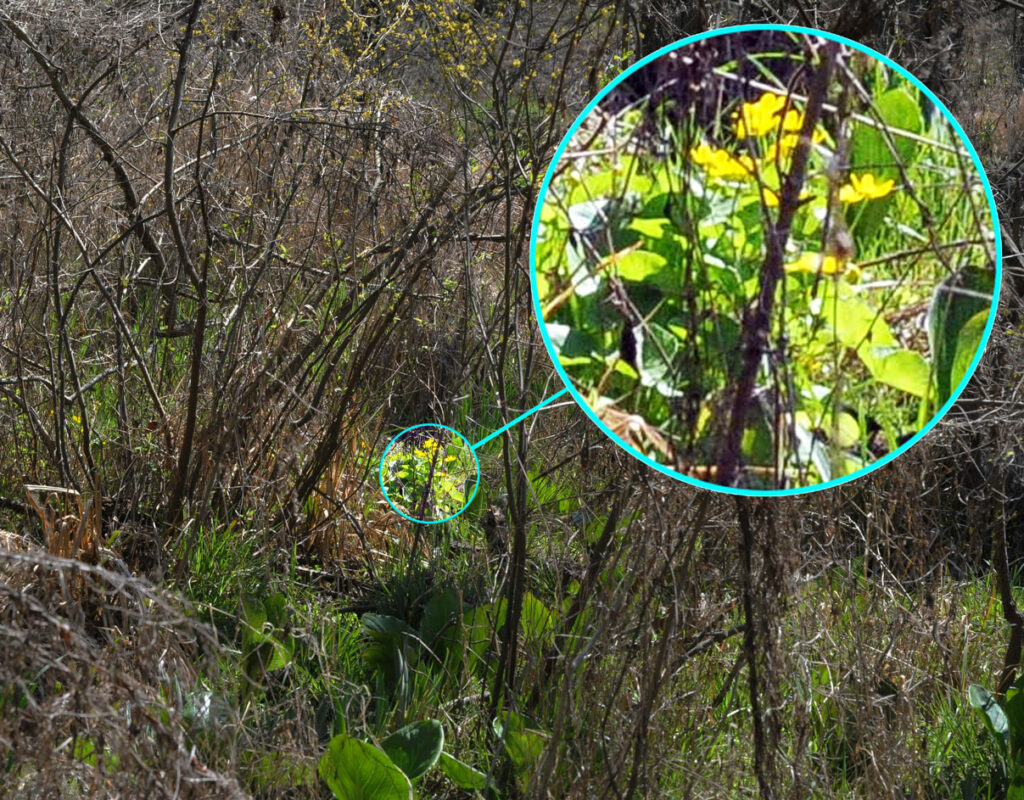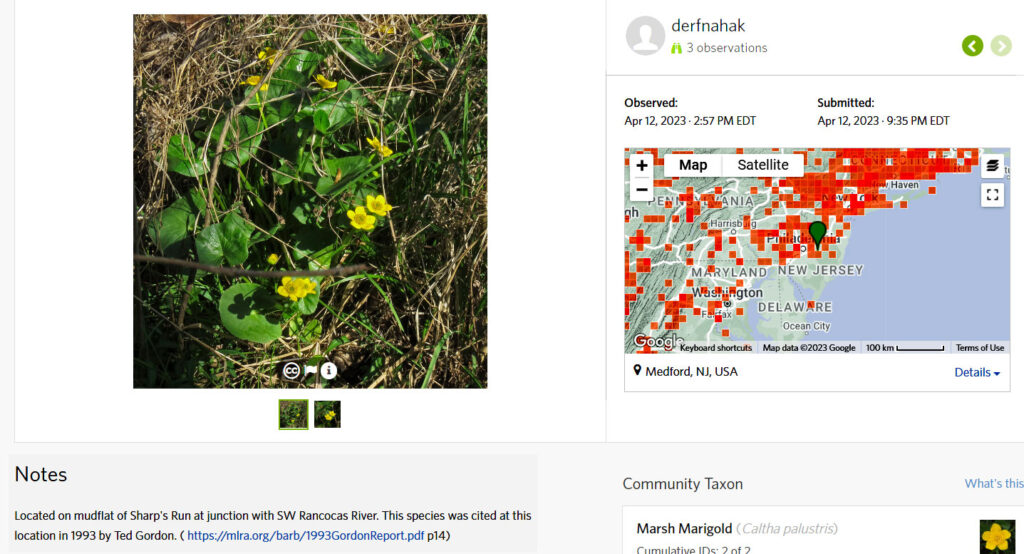In 1992 Ted Gordon, a recognized authority on the habitats and flora of the New Jersey Pine Barrens, was commissioned to survey the traillands of Medford Leas. His 1993 manuscript of this survey is preserved on this MLRA site (1). There as well is an illustrated article based both on his report and on a tour of the trails that he led for residents in 2011.
In the 1993 manuscript, Gordon described the flora of a rarely visited spot: “The muck flats east of the northern tip of the Island harbor Marsh Marigold (Catttra palustris), Cardinal-flower (Lobelia cardinalis ), Fringed loosestrife (Lysimachia ciliata), and Turtlehead (Chelone glabra.)”
Marsh Marigolds were not listed among the several species Gordon cited as having been introduced by residents during the late ’70s, when volunteer planting of the trails with non-native wildflowers was actively pursued. Locally, Marsh Marigolds are so uncommon that the species is unmentioned in the definitive Field Guide to the Pine Barrens of New Jersey published in 1991 by the late Howard P. Boyd.

It was the unusually cold and dry early Spring this year that enabled confirmation of the Marsh Marigold. At a spot on trail Y12 in the second week of April, through the leafless undergrowth I caught sight of bright yellow flowers on the floodplain of Sharps Run. This encouraged me to brave the catbrier and confirm they were indeed a cluster of Marsh Marigolds rooted in the wet “muck.”
Above is my sighting entry on iNaturalist (2) for that day; a nearby sighting in Burlington Co. is off the boardwalk in Boundary Creek NRA. As shown on the scatter map, this species’ rarity in South Jersey extends through the Atlantic Coastal Plain into Delmarva.
Both the Marsh Marigold and the common invasive Lesser Celandine — with which many an observer confuse it, since they both bloom in early Spring — are members of the Buttercup family. The distribution of the Marsh Marigold is described as Circumpolar; there are white and lavender varieties in the Himalayas! While there are only a few circumpolar flowering plants, the animal species in this category are much better known, e.g. the Polar Bear and Woolly Mammoth, the Snowy Owl and Snow Bunting — and H. sapiens, all fellow travelers across Beringia.
— Text and photos by Fred Kahan



